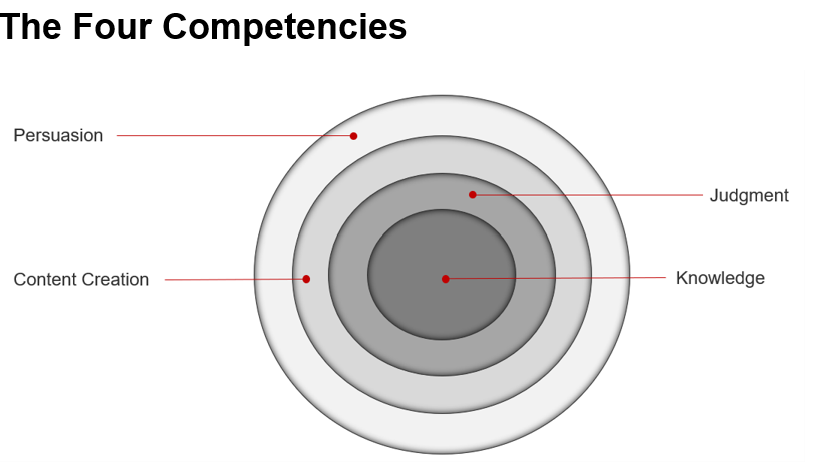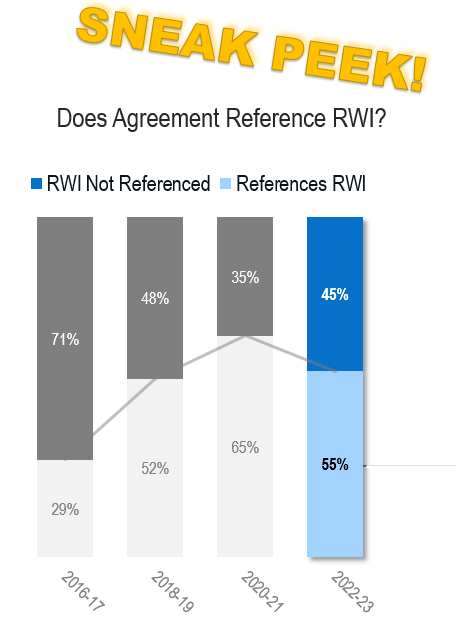
On May 15, 2023, the New York Times reported that “The Greatest Wealth Transfer in History Is Here, with Familiar (Rich) Winners.”[1] This transfer of wealth includes giving to tax-exempt organizations, as highlighted by a recent Forbes article on how the late Subway cofounders gave away billions in order to minimize tax liability for themselves and their foundations.[2] But this unprecedented transfer of wealth occurs at a time when many predict an imminent economic slowdown or worse. The convergence of a massive transfer of wealth and an economic downturn might create a perfect storm, imposing the remedy of centuries-old fraudulent transfer law against charities that receive gifts that are later shown to constitute fraudulent transfers by the donors. The result may be money judgments against the charities.
This article examines what a charity should know about its exposure to liability as the transferee of a donation that turns out to be a fraudulent transfer by the donor. A charity can perform due diligence to manage most kinds of risk resulting from its receipt of a donated asset (e.g., hard-to-manage/risky assets, the risk of inadvertently participating in a tax shelter,[3] etc.), but a charity—even a large charity with sophisticated general counsel—faces a much more difficult challenge in attempting to mitigate the risk potentially posed by fraudulent transfer law. This article will also address how the law surrounding this intersection has evolved and how the courts have approached the issue of charity liability under fraudulent transfer law.
Fraudulent Transfer Law in a Nutshell
The core of the ancient doctrine of fraudulent transfer permits a creditor to set aside a transfer made by its debtor when the debtor intended to “hinder, delay, or defraud” any of its present or future creditors. A fraudulent transfer of this primordial type has come to be referred to as involving “fraud in fact” or “actual fraud.” Fraudulent transfer law also permits a creditor to set aside a transfer made by its debtor when, regardless of the debtor’s intent, the debtor does not receive “reasonably equivalent value” in return and the debtor is in a sufficiently bad financial condition, such as by being insolvent at the time of, or as a result of, the transfer. A fraudulent transfer of this type has come to be referred to as involving “fraud in law” or “constructive fraud.” A gift will almost certainly satisfy the first requirement of constructive fraud because gifts are typically made without the donor receiving, or even expecting to receive, any asset in exchange. Not surprisingly, constructively fraudulent transfers are quite often made by a debtor to the debtor’s friends and family.
Fraudulent transfer law is addressed by state statutes as well as the Bankruptcy Code. The vast majority of states have adopted the Uniform Fraudulent Transfer Act (“UFTA”), promulgated in 1984.[4] The UFTA was amended in 2014, and those amendments included changes in terminology as well as a name change to the Uniform Voidable Transactions Act (“UVTA”).[5]
The terms actual fraud and constructive fraud, although consistent with the UFTA terminology, are misleading because no fraud is required under either theory of recovery. Consequently, under the UVTA, the term fraudulent transfer was replaced with voidable transaction.[6] More than half of the states that have adopted the UFTA have adopted the UVTA amendments to the UFTA. However, because the decisions discussed below involved application of the UFTA and its terminology (as well as the Bankruptcy Code) references will be made to the traditional UFTA terminology.
It is important to understand that both present and future creditors may seek relief under fraudulent transfer law.[7] Additionally, the actual fraud theory requires the plaintiff creditor only to prove that the debtor made the transfer with intent to hinder, delay, or defraud creditors. Because direct evidence of intent is often difficult to obtain, a creditor may rely on circumstantial evidence of intent such that intent may be presumed or inferred (e.g., the “badges of fraud”). A claim under the actual fraud theory does not disappear because the debtor received value in exchange for what the debtor transferred. If the debtor received sufficient value in exchange, it may be that the debtor’s creditor need not seek fraudulent transfer relief against the debtor’s transferee because the creditor can satisfy its claim against the debtor by simply pursuing the debtor. But receipt of value by the debtor from the transferee does not mean that a creditor is prohibited from seeking recovery against the transferee. As the attractiveness of the exchanged asset diminishes, the prospects of an actual fraud claim against the transferee increase.
Merely avoiding a fraudulent transfer is not the only remedy available to creditors. As many courts have noted, rewarding a debtor and transferee with a mere reversal of the transfer simply encourages debtors to transfer “low-hanging fruit” because the worst that can happen is a creditor will reverse the transfer. Instead, a creditor may seek a monetary judgment against the transferee of the transfer. In addition, as discussed later, the creditor might also seek additional relief, such as punitive damages.
Why would someone in financial distress donate to charity? As one court noted, “[p]rominent displays of charity attract public attention generally. They can attract new investor-victims through the general semblance of success and a charity-specific ‘affinity factor.’ And, they put up a broad cover of good will that can mask the perpetrator’s underlying dishonesty.”[8]
Charity Exposure to Fraudulent Transfer Liability
In a common fraudulent transfer scenario involving a donor’s transfer of wealth to a noncharity, a debtor may transfer assets to a friend or a trust created for family members. These individuals might be aware of the debtor’s plan to thwart creditors and can make a well-informed judgment as to whether it is worth participating and assuming the risk of a monetary judgment. The debtor may even conspire with individuals to assure them that if anything goes wrong, the debtor will make the transferee whole. Not surprisingly, courts have awarded compensatory and punitive damages to a creditor who expends resources unwinding transactions, including by imposing liability on transferees and others who assist the transactions. Courts commonly appeal to utilitarian and retributivist principles in fashioning fraudulent transfer relief. This is reflective of a cause of action that has its roots in a penal statute, the ancient Statute of 13 Elizabeth.[9]
Charities, as transferees, may assert various defenses against creditors. In an action under the so-called actual fraud theory, the charity may assert an absolute defense under UFTA section 8(a). Specifically, the charity will escape exposure if it can show that it acted in good faith and gave reasonably equivalent value. If attacked under the so-called constructive fraud theory, the charity can defend itself by showing that it provided reasonably equivalent value, because failure of the transferee to give reasonably equivalent value in return for the asset it received from the debtor is a prerequisite for any constructive fraud claim. The analysis can differ if the debtor is bankrupt because, for example, a good-faith defense would not exist for a charity that is considered to be the debtor’s “initial” transferee but would exist for a charity that is considered to be the debtor’s “subsequent” transferee that provides value and does not know about the voidability of the transfer.[10]
A donor to a charity might intend to thwart creditors, but the charity most likely has no idea of a donor’s circumstances or intent. In contrast to a charity, a friend or family member of the debtor who receives a fraudulent transfer is bound to have information about the debtor and the transfer that will enable the individual to make a decision—and to seek legal advice—about the individual’s fraudulent transfer exposure. Importantly, the remedies for a fraudulent transfer include not only avoidance of the transfer but also a possible money judgment against the transferee. This is more likely to occur where the transferee transfers the transferred asset or dissipates the asset before a creditor can reach it (though the UVTA and UFTA literally give the creditor a free choice between avoidance and a money judgment).
Given the range of remedies and potential impact on charities, it is worth reviewing relevant case law.
Cases Involving Charities as Transferees
Cases about fraudulent donations to charity often feature large gifts made by principals of Ponzi schemes, funds received through auctions and pledges, and situations in which the charity may attempt to escape liability in bankruptcy by claiming that it is a “mere conduit.” Timing may also play an important role. Such fact patterns appear in the following cases.
Scholes v. Lehmann. Perhaps the best-known case involving a charity’s exposure to fraudulent transfer liability is Scholes v. Lehmann.[11] In Scholes, the receiver for corporations owned by a Ponzi scheme principal brought fraudulent transfer actions (under Illinois law) to recover investor funds from the former principal’s spouse, one of the Ponzi scheme investors, and several charities that received funds from the corporations. The charities argued that the donations they received from the principal should not be subject to attack under fraudulent transfer law, which would provide the receiver with money judgments against the charities in the amount of the donations. A money judgment against a charity can be problematic because charities may not hold onto donated funds but instead apply the funds for immediate charitable purposes.[12] At the oral argument on appeal from money judgments rendered against the charities, counsel for the charities argued that if charities are liable for fraudulent donations, charities will have to host “annual ‘fraud balls’ at which they try to raise money to pay judgments in suits brought by persons who claim that some of the money donated to the charity had been obtained from these persons by a fraud or theft by the donor.”[13]
In upholding the district court’s judgment that the charities were liable, Judge Posner gave thought to ways in which charities might limit their exposure. Instead of annual “fraud balls,” charities could screen donors (which he acknowledged “hardly seems feasible”) and hold cash reserves for fraudulent transfer exposure.[14] Judge Posner also considered whether a charity could obtain insurance to cover its fraudulent transfer exposure. Judge Posner found the charities’ arguments “appealing” but commented that charities should seek relief through the legislative process.[15] Scholes highlights the danger a charity faces of being held responsible for paying a creditor for the amount of a donation received.
In re Rothstein Rosenfeldt Adler, P.A. The case In re Rothstein Rosenfeldt Adler, P.A.[16] involved the bankruptcy of a law firm accused of orchestrating a $1.2 billion Ponzi scheme that resulted in a named partner’s fifty-year sentence. The issue arose as to whether the law firm payments to a charity for auction items via a competitive auction, as well as payments pursuant to a pledge, would be recoverable by the bankruptcy. Alternatively, if section 548(c) of the Bankruptcy Code applied, it would permit the charity to retain the funds and enforce its obligation to the extent that it gave value to the debtor and acted in good faith. The court determined that the charity acted in good faith and received value in exchange for auction items[17] as well as pursuant to a preexisting pledge agreement.[18]
In re Engler. The case In re Engler[19] involved a Ponzi scheme that bilked investors out of approximately $170 to $350 million; in the process, the debtors running the Ponzi scheme donated to a church project. The donations were the subject of a recovery action by a Chapter 7 bankruptcy trustee, which ultimately proved unsuccessful for the trustee, the details of which follow.
A group of parishioners of St. John the Evangelist Catholic Church in Naples, Florida, sought to raise money for Food for the Poor, an international faith-based organization. Specifically, Food for the Poor was raising money for its Jamaica Housing Project (“Project”). Some of the church parishioners created the Jamaica Outreach Program (“JOP”), a nonprofit organization, to raise money for the Project, where funds would be used to help build homes for poor Jamaican residents. Because the JOP had not obtained its 501(c)(3) tax-exempt status at the time it began soliciting donations for the Project, the JOP asked the church to receive donations on its behalf, to which the church agreed. Because the church believed it could not set up a separate project account under Diocesan accounting rules, it accepted donations—including funds from the debtors—into its general operating account, which was commingled with church revenue. However, the church did create a subaccount and separately accounted for the donations.
Because the fraudulently transferred funds were separately accounted for and were not for the church’s use, the court held that the church was a “mere conduit” and thus escaped liability for receiving this fraudulent transfer under section 550 of the Bankruptcy Code:
All of the donors, including the Debtors, specifically earmarked their donations for the Project. And that is where the money ultimately went. This is not a case where the Debtors simply donated money to the Church to build a parish center or fund its general operations. The Church’s use of the Debtors’ donation was circumscribed by its legal obligations to the Debtors and the JOP.[20]
Pergament v. Brooklyn Law School. The timing of a fraudulent transfer to a charity may play a role in determining whether the charity can escape liability on the ground that it is a conduit or is entitled to assert a good-faith defense. Such was the case in Pergament v. Brooklyn Law School,[21] in which a debtor was sued for allegedly bilking someone out of millions of dollars. During the course of the litigation, the debtor paid tuition for his children (including to Brooklyn Law School) before ultimately having a judgment entered against him. After the judgment of approximately $11 million was entered against him, he filed bankruptcy. Pergament demonstrates how timing matters. If the tuition payments were refundable, the student for whose benefit the transfers were made—not the school—could be viewed as the initial transferee. But once the tuition payment obligation matured (i.e., after the refund period expired), then, as to the amount considered nonrefundable, the tuition became the school’s (viewed as a creditor), and the school could do whatever it wanted with the funds. At this point, the school would become the “initial transferee” and not a mere conduit.
State Laws That Provide Limited Protection to Charities
Some states have special statutes that provide some protection for charities that receive fraudulently transferred assets. These states include Florida, Georgia, and Minnesota. The key issues with these statutes is to determine whether protection exists based on the type of person making the donation (e.g., individual or business entity), the type of asset donated, the type of charity entitled to protection, the period for which protection may exist, potential caps on annual amounts donated, and the nature of the fraudulent transfer theory being asserted (constructive versus actual) that is required to trigger protection under the statute. The nature of the fraudulent transfer theory is particularly important because if the debtor-donor is running a Ponzi scheme, courts will presume that the debtor’s charitable donations are subject to recovery under the actual fraud theory. Where more than one state’s fraudulent transfer law may apply, complex choice of law issues emerge. While the UVTA amendments provide certainty for a charity performing due diligence on large donations due to an easy-to-apply choice of law pointer, no such provision exists in the UFTA, leading to expensive litigation to determine applicable fraudulent transfer law.[22]
Florida. In Florida, section 726.109 of the Florida UFTA (relating to defenses, liability, and protection of a transferee) provides that a charitable contribution to a “qualified religious or charitable entity or organization” is not a constructive fraud transfer under section 726.105(1)(b) as long as the contribution was received in good faith. This protection does not extend to an actual fraud claim available to all creditors or the type of constructive fraud claim available to present creditors when the debtor is left insolvent after the transfer. Put differently, a contribution to a charity where the donor makes the donation with actual intent to hinder, delay, or defraud, or does not receive reasonably equivalent value in exchange for the contribution and is rendered insolvent, is fair game for certain creditors to pursue a charity as a transferee.
Further, a contribution from a “natural person” is a fraudulent transfer if the transfer was received on, or within two years before, the earlier of the date a cause of action is brought for a fraudulent transfer, the filing of a bankruptcy petition, or commencement of insolvency proceedings under any state or federal law, including an assignment for the benefit of creditors or the appointment of a receiver. The statute goes on to provide that the transfer will not be fraudulent for the natural person if the transfer was made consistent with the person’s practices of making charitable contributions or the transfer was received in good faith and the amount of the contribution did not exceed 15 percent of the person’s gross annual income for the year in which the contribution was made. The charitable contribution protected by the Florida UFTA is one that is defined in Internal Revenue Code (“I.R.C.”) section 170(c), as long as the contribution is a financial instrument as defined in I.R.C. section 731(c)(2)(C) or cash.
The effect of these statutory protections is to protect charities from certain forms of constructive fraud claims, as well as protect charities for receiving relatively small and routine donations made by individuals. This means that donations made by the debtor-donor with actual intent to hinder, delay, or defraud creditors (e.g., donations from Ponzi schemes) are prone to recovery, whereas tithing transfers by individuals are less likely to be recovered.
Georgia. Georgia’s UVTA has a special section dedicated to transfers to charities. Section 18-2-85 provides that a transfer made to a “charitable organization” will be considered voidable only if it is established that (1) a voidable transaction has occurred as described in section 18-2-74 (actual and constructive fraud as to all creditors) or 18-2-75 (constructive fraud as to present creditors), and (2) the charitable organization had actual or constructive knowledge of the voidable nature of the transfer.
Minnesota. Minnesota’s protection for charitable organizations is housed in the definitional section of Minnesota’s UVTA. Here, the term transfer does not include a transfer of a charitable contribution to a “qualified charitable or religious organization or entity,” with some exceptions. If the transfer was made within two years of a claim brought under the Minnesota UVTA, the charitable contribution is considered a voidable transfer.
However, a contribution within two years that was not made with actual intent to hinder, delay, or defraud the debtor-donor’s creditors is not a voidable transfer as long as the amount involved did not exceed 15 percent of the gross annual income of the debtor for the year in which the transfer of the contribution was made, or the contribution exceeded that amount but was consistent with practices of the debtor in making charitable contributions. Investment returns on the amounts contributed are excepted from the term transfer. Only charities described in I.R.C. section 170(c)(1), (2), or (3) may use this protection.
Federal Bankruptcy Law Protection for Charities
Section 548 of the Bankruptcy Code was amended by the Religious Liberty and Charitable Donation Act of 1998 to provide charities with some protection from a fraudulent transfer attack brought in the debtor-donor’s bankruptcy case. Section 548(a)(2) provides that a charitable contribution to a “qualified religious or charitable entity or organization” will not be considered a constructively fraudulent transfer if (i) the amount of the contribution did not exceed 15 percent of the gross annual income of the debtor in the year the contribution was made, or (ii) the contribution exceeded the 15 percent amount but was consistent with the debtor’s practices in making charitable contributions. The protection does not extend to a transfer that is attacked under the actual fraud theory. Furthermore, it has been held that a contribution that exceeds the 15 percent ceiling and is not “consistent with the debtor’s practices in making charitable contributions” is voidable in its entirety, not merely the portion above 15 percent.[23] As Professor Jeffrey Davis noted, even though this protection extends to charities defined in I.R.C. section 170(c)(1) and (2), “it is clear that congress’ motive was to protect tithes received by churches.”[24]
Insurance Coverage for Fraudulent Transfers
In Scholes v. Lehmann, Judge Posner suggested that a charity might obtain insurance coverage to limit its fraudulent transfer exposure. Unfortunately for charities, many policies exclude an insured-transferee’s monetary obligation from the definition of loss. Payment of such amounts has been compared to disgorgement or restitution for which coverage should not exist on public policy grounds. Such transactions are generally viewed as uninsurable either under the definition of loss and/or via endorsement.[25]
It may be that a charity and/or individual directors could seek defense coverage under a directors and officers (“D&O”) policy for engaging in a “wrongful act,” but as to a monetary judgment, a fraud exclusion could apply. Ultimately, the terms of the policy, including governing law, are vital to determining the extent to which coverage exists. Consequently, charities should consult with their insurance adviser regarding the extent of coverage provided (if any) in the event that the charity is sued as the transferee of a donation. A few cases discussed below highlight some of the issues involved in coverage disputes involving fraudulent transfer liability.
Case Law Regarding Fraudulent Transfer Coverage
In Huntington National Bank v. AIG Specialty Insurance Co.,[26] a lender accepted loan payments from a borrower who allegedly ran a Ponzi scheme and later filed for bankruptcy. Some of the loan payments were received by the lender in good faith, but some payments made after a certain date, according to the court, were not received in good faith. Recall that section 548(c) of the Bankruptcy Code provides a good-faith defense. These subsequent payments, if not received in good faith, would be subject to recovery by the bankruptcy trustee. The lender eventually agreed to return $32 million via settlement with the bankruptcy trustee.
One of the key issues in the case was whether the lender was entitled to recover under its insurance policy that covered professional services, which policy had been issued by two different insurers (primary and excess coverages). Coverage potentially existed under the policy because the alleged wrongful acts of the lender arose from the lender’s performance of banking services to the bankrupt borrower. The primary policy covered losses arising from a claim first made against the insured during the policy period and reported to the insurer for any wrongful acts of the insured in rendering or failing to render professional services. A “loss” was defined to include damages, judgments, settlements, and defense costs. Importantly, the definition of loss was modified by an endorsement to exclude “matters that may be deemed uninsurable under the law pursuant to which this policy shall be construed.”[27] The policy also had several potentially applicable exclusions.
Ultimately, the primary insurer concluded that the policy terms precluded coverage. This prompted the lender to sue the insurer, alleging breach of contract and bad-faith denial of coverage. The insurer argued that no “loss” had occurred, and even if a loss had occurred, coverage was precluded by the endorsement. The court considered the governing law, Ohio, in its coverage analysis. The court noted that in other cases a distinction was made between the wrongful “retention” of money, which might be insurable, versus the wrongful “acquisition” of money, which is not. In the case before it, the court focused on whether the lender’s receipt of payments accepted without good faith constituted unlawful taking of money or unlawful holding of money. The lender argued that the fact that the loan payments by the borrower were found to be fraudulent transfers by the borrower meant only that the money was wrongfully held by the lender. The court held that while the lender had a right to be repaid, it did not have a right to accept payments from the debtor in the absence of good faith and to the detriment of the borrower’s fraud victims. Because acceptance of the funds by the lender was “wrongful,” the receipt of the payments was the wrongful taking of money and was uninsurable.[28]
Huntington National Bank thus illustrates how a court will focus on the type of fraudulent transfer along with the facts and circumstances when evaluating insurance coverage. It also illustrates how courts generally avoid finding coverage for monetary judgments due to public policy against insurability for what the courts might view as disgorgement or restitution.[29] However, each case must be examined on its merits, considering not only the terms of the insurance contract but also governing law, as highlighted in Sycamore Partners Management, P.P. v. Endurane American Insurance Co.[30]
In Sycamore Partners, Delaware law applied to a coverage dispute involving a fraudulent transfer. Notably, in Delaware, losses are uninsurable as against public policy only if the legislature so provides. In that case, investment funds (Sycamore) purchased all of the stock of a target company (Jones Group) in a leveraged buyout where Jones Group was renamed Nine West. Nine West sold various high-performing assets to Sycamore, which then sold those assets for a net profit of $336 million.[31] Nine West ultimately filed for bankruptcy, from which a variety of lawsuits, including a fraudulent transfer action, were brought against Sycamore and its management. Sycamore ultimately settled by paying $120 million to Nine West’s estate in exchange for dismissal of the claims.
Sycamore made a claim against its insurers to recover a portion of the settlement and the expenses it had incurred to defend Nine West’s claim. The insurers denied coverage, prompting Sycamore to sue them for breach of contract. The insurers raised several defenses, including the argument that the settlement was not insurable as a matter of public policy because it constituted disgorgement by Sycamore of ill-gotten gains that Sycamore had procured from the Nine West transactions.
The insurance policy contained a “law most favorable to insurability” clause, which the court viewed as a choice of law clause. Because Sycamore was seeking coverage, the provision allowed Sycamore discretion to choose any reasonable forum that it believed would maximize its chances of defeating the insurability defense. Sycamore chose Delaware law, which the court would utilize unless the insurers could demonstrate clearly that the “law most favorable” provision was unenforceable because of a public policy in a state with an interest materially greater than Delaware’s. Because the insurers could not do that, the court had to decide whether the settlement was insurable under Delaware law. Recall that in Delaware, losses are uninsurable as against public policy only if the legislature so provides. On this point, the court looked to Delaware law: while Delaware has a fraudulent transfer statute, it does not have a statute that renders insuring against disgorgement or restitution contrary to Delaware public policy. While the court ruled in Sycamore’s favor (on Sycamore’s motion for partial summary judgment as it pertained to the insurers’ uninsurability defense based on public policy grounds), the court also noted that it was not suggesting that insurance companies are required to cover restitution or disgorgement. It just so happened that, based on the terms of the particular insurance policy, the insurers were faced with their own contractual limitations that resulted in coverage.
Important Considerations for Charities Receiving Large Gifts
Many issues that are ancillary to transferee liability under fraudulent transfer law can be addressed in advance by a well-drafted gift agreement.[32] However, given its potential exposure to transferee liability, a charity should consider additional steps to minimize its risk when it accepts a donation or donations that bring an increased probability of liability. Given their susceptibility to receiving donations tied to Ponzi schemes, charities should also consider the use of a morals clause to address ancillary issues arising out of particularly egregious donor fact patterns.[33]
Searching public records for pending lawsuits is an easy way to discover whether a donor’s circumstances suggest an unusual likelihood of a fraudulent transfer action. A sound understanding of the nuances of fraudulent transfer law would also be helpful. For example, knowledge of applicable fraudulent transfer law would help to decide the period for which the charity retains funds—and how it retains them—before using them. A charity would benefit if it were able to identify factors that might give rise to its actual or constructive knowledge of the nature of the donation as a fraudulent transfer, which may later affect its entitlement to a defense.
Some protection might already exist in case law that may deter fraudulent transfers to charities in the first place. Many courts have awarded damages (including punitive damages) to creditors in fraudulent transfer cases, thereby providing a potential deterrent effect from those wishing to hinder their creditors. “Without punitive damages, nothing other than costs would deter a debtor from attempting to fraudulently transfer his assets. If he gets caught, so be it: The cost would simply be what was owed in the first place.”[34] In certain circumstances, courts have also been willing to find those who conspire or aid and abet fraudulent transfers to be liable for damages. Some state fraudulent transfer statutes provide a creditor with attorney fees, which may also act as a deterrent to the fraudulent transfer of assets.
A charity that finds itself the target of a recovery action will reach out to legal counsel to review the viability of the claim and potential defenses, and analyze the costs and benefits involved in defending the action. Charities and their executives should consult with their insurance advisers—before litigation is filed or threatened—as to whether coverage for fraudulent transfer–related litigation exists under their policies. That inquiry may involve determining whether certain policies could provide coverage (e.g., errors and omissions (“E&O”) or D&O), whether any difference in coverage exists based on the nature of the fraudulent transfer (e.g., actual versus constructive fraud), and what types of losses are potentially covered. If coverage is not available, charities should consider negotiating with carriers for the coverage sought. If coverage is not available or feasible on the commercial market and a risk-scoring analysis supports pursuing such coverage, a charity should consider the use of alternative risk solutions (e.g., a risk retention group, a captive insurance company,[35] etc.).
In closing, where a charity finds itself exposed for receipt of a fraudulent transfer, the courts have ruled in favor of creditors. These decisions pit the public policy of fraudulent transfer law protecting creditors against the public policy supporting charitable giving. While the decisions might seem harsh to charities, there are general defenses along with limited statutory protections, and charities can—and should—take the steps described above to protect against a court order requiring the return of funds.
Talmon Joseph Smith & Karl Russell, The Greatest Wealth Transfer in History Is Here, with Familiar (Rich) Winners, N.Y. Times (May 14, 2023). ↑
Jemima McEvoy, Subway’s Hidden Billions Revealed: How Its Founders Sliced Up a Fortune, Forbes (Apr. 17, 2023). ↑
See Letter from Kevin M. Brown, Acting Comm’r, Internal Revenue Serv., to Charles E. Grassley, U.S. Senator (June 28, 2007) (“In the tax shelter area, abusive programs often require a ‘tax-indifferent party’ to make the scheme work. Some tax-exempt customers continue to allow themselves to be used, often in new ways, as accommodation parties to enable abusive tax shelters.”). ↑
The first uniform act was the Uniform Fraudulent Conveyance Act (“UFCA”), promulgated in 1914. Because the UFCA is in force in only two states, it will not be addressed. ↑
In 2014, the Uniform Law Commission changed the term fraudulent transfer to voidable transaction via amendments to the Uniform Fraudulent Transfer Act (with such act being renamed the “Uniform Voidable Transactions Act”). Notwithstanding the change in terminology, the modern term voidable transaction will be referred to as fraudulent transfer unless context requires otherwise. ↑
Given the modernization of terminology under the UVTA amendments, the term actual fraud should be replaced with primordial rule, and constructive fraud should be replaced with undercompensated transaction. ↑
See generally David J. Slenn, The Fraudulent Transfer of Wealth: Unwound and Explained (Am. Bar Ass’n Publ’g 2022). ↑
In re Petters Co., Inc., 532 B.R. 100, 104–05 (Bankr. D. Minn. 2015). ↑
South Carolina’s fraudulent conveyance statute still calls for a penalty and incarceration. A number of states have a criminal statute that addresses “defrauding creditors,” which may mean secured or unsecured creditors. These range from misdemeanors to felonies, based on certain factors. ↑
See In re JVJ Pharmacy Inc., 630 B.R. 388, 400 (S.D.N.Y. 2021) (explaining the difference between an initial and subsequent transferee):
The difference between the first two categories [initial transferee and entity for whose benefit the transfer was made] and an “immediate or mediate transferee of such initial transferee,” i.e., a subsequent transferee, has legal significance. A subsequent transferee can raise an affirmative defense to liability by demonstrating that it took the transfer “for value . . . in good faith, and without knowledge of the voidability of the transfer avoided.” Id. § 550(b)(1). Meanwhile, the initial transferee or the entity for whose benefit the transfer was made is limited to the defense contained in section 548(c), which is similar to the defense available to a subsequent transferee in section 550(b)(1), but for one important difference. Under section 548(c), an initial transferee or entity for whose benefit the transfer was made may retain the transfer if it took the transfer “for value and in good faith” and “gave value to the debtor in exchange for such transfer or obligation.” Id. § 548(c) (emphasis added). Thus, while a subsequent transferee may invoke a defense to recovery by proving that it took the transfer “for value” from the previous transferor, in addition to acting in good faith and without knowledge of the transfer’s avoidability, the initial transferee or the entity for whose benefit the transfer was made must further show that it “gave value” to the debtor.
See also In re Teleservices Grp., Inc., 444 B.R. 767, 793 (Bankr. W.D. Mich. 2011), objections overruled sub nom. Meoli v. Huntington Nat’l Bank, No. 1:12-CV-1113, 2015 WL 5690953 (W.D. Mich. Sept. 28, 2015), rev’d in part sub nom. Meoli v. Huntington Nat’l Bank, 848 F.3d 716 (6th Cir. 2017). (“Of course, treating Huntington as the initial transferee would have eliminated its eligibility for the Section 550(b)(1) defense and would have brought Section 548(c) into play instead.”). ↑
Scholes v. Lehmann, 56 F.3d 750 (7th Cir. 1995). ↑
Id. at 760 (“In this case, the charities used donations for “missionary endeavors here and abroad, but included as well are earthquake relief in San Francisco and the construction of a chicken hatchery and a children’s dormitory in Africa.”); see also Petters, 532 B.R. at 105 (“By the time they are called to account, charity-recipients have usually expended the donated funds on their mission—many times without capital enhancement from the expenditure.”). ↑
Id. at 761. ↑
Id. ↑
The nature of the conflict pits important public policy that one must be honest to his creditors before anyone else, against public policy supporting charitable organizations. See Petters, 532 B.R. at 105 (“[T]his invocation of fraudulent transfer remedies presents a snarl of conflicting public policy considerations. It is a troubling conundrum for any court that presides over such litigation.”). ↑
In re Rothstein Rosenfeldt Adler, P.A., 483 B.R. 15, 17 (Bankr. S.D. Fla. 2012). ↑
Id. at 21 (“The auction and attendance was an arm’s length transaction and the funds were received by the Foundation from RRA in good faith.”). ↑
Id. (“The pledge agreement entered into by RRA was entered into in good faith by the Foundation, was a customary and routine arm’s length transaction, and was a typical arrangement that the Foundation participated with many other donors. The payments were received in the same manner. These contributions raised RRA’s profile in the community, which provided it with additional intangible value.”). ↑
In re Engler, 497 B.R. 125 (Bankr. M.D. Fla. 2013). ↑
Id. at 130. ↑
Pergament v. Brooklyn L. Sch., 595 B.R. 6 (E.D.N.Y. 2019). ↑
The differences among potentially applicable fraudulent transfer statutes governing a fraudulent donation might determine a charity’s liability. See In re Palm Beach Fin. Partners, L.P., No. 09-36379-BKC-PGH, 2014 WL 12498025, at *10 (Bankr. S.D. Fla. Dec. 10, 2014). The bankruptcy court, sitting in Florida, applied Florida’s choice of law rules. In doing so, the court applied the Second Restatement’s “significant relationships” test for actions sounding in tort and concluded that Georgia law applied to the trustee’s fraudulent transfer claims. The National Christian Foundation, Inc., as transferee-defendant, argued for application of Minnesota law, which potentially barred the trustee’s claims. Id. at *3 (“Minnesota’s Charitable Contribution Exception applies retroactively. Although Florida and Georgia both passed amendments enacting similar charitable contribution exceptions in 2013, neither Florida’s amendment nor Georgia’s amendment applies retroactively.”). ↑
See In re McGough, 737 F.3d 1268, 1275–76 (10th Cir. 2013) (transferee charity, Word of Life Christian Center, unsuccessfully argued for a return of only the amount that exceeds 15 percent):
Despite the statute’s plain meaning, the Center argues we should nevertheless adopt its interpretation of the statute because to do otherwise would reach an absurd result—it would protect a debtor’s right to donate 15% of his GAI to a charitable organization but allow a trustee to avoid the entire amount of the donations if they are one cent over the 15% threshold. Such a result, according to the Center, would place an undue burden on churches and other charitable organizations which would have to investigate a donor’s financial background in order to use funds within two years of their receipt (the reach-back period). Moreover, according to the Center, to allow a trustee to avoid the entire transfer if it exceeds 15% of GAI would undercut the purposes of RLCDPA—to protect religious and charitable organizations from having to turn over donations they receive from individuals who subsequently file for bankruptcy and to protect the rights of debtors to make religious and charitable donations up to 15% of their GAI.
See also Jay D. Adkisson, McGough: Debtors’ Charitable Giving Limited to 15% of Gross Income in Bankruptcy, Forbes (Mar. 16, 2012). ↑
Jeffrey Davis, Protecting Charities from State Fraudulent Transfer Law 2 (Fla. Bar Bus. L. Section, 2012). ↑
See generally Kyle D. Black, Looking Past the Labels: How to Determine Whether Disgorgement or Restitution Payments Are Insured, Brief, Summer 2022, at 34, 35 (“Insurers do not want to insure a thief. And courts have generally recognized that using insurance proceeds to restore ill-gotten gains is against public policy. That is why directors and officers (D&O), errors and omissions (E&O), and professional liability policies often exclude ‘fines and penalties’ or other ‘matters which may be deemed uninsurable under applicable law’ from their definition of ‘loss.’” (internal citations omitted)). ↑
Huntington Nat’l Bank v. AIG Specialty Ins. Co., No. 2:20-CV-256, 2022 WL 17741060 (S.D. Ohio Dec. 16, 2022). ↑
Id. at *955. ↑
The lender filed an appeal to the Sixth Circuit on January 17, 2023. ↑
The insurance company noted such decisions in its response in opposition to the lender’s motion for partial summary judgment. Defendants’ Response in Opposition to the Huntington National Bank’s Motion for Partial Summary Judgment at 12–13, Huntington Nat’l Bank v. AIG Specialty Ins. Co., 2021 WL 6552130 (S.D. Ohio Dec. 17, 2021) (“Chubb Custom Ins. Co., 2011 WL 4543896, at *11; William Beaumont Hosp., 552 F. App’x at 498; see also In re TransTexas Gas Corp., 597 F.3d 298, 309 (5th Cir. 2010) (holding that the insured’s claim for fraudulent transfers was uninsurable under the law); Level 3 Commc ‘ns, Inc. v. Fed. Ins. Co., 272 F.3d 908, 910 (7th Cir. 2001) (‘a “loss” within the meaning of an insurance contract does not include the restoration of an ill-gotten gain’); Millennium Partners, L.P. v. Select Ins. Co., 24 Misc. 3d 212, at *216 (NY Sup. Ct. Mar. 9, 2009), aff’d, appeal dismissed, 68 A.D.3d 420, 889 N.Y.S.2d 575 (2009) (‘disgorgement of “ill-gotten funds is not insurable under the law” because such disgorgement “does not constitute ‘damages’ or a ‘loss’ as those terms are used in insurance policies”’).”) ↑
Sycamore Partners Mgmt., L.P. v. Endurance Am. Ins. Co., No. CVN18C09211AMLCCLD, 2021 WL 761639 (Del. Super. Ct. Feb. 26, 2021). ↑
Id. at *2. ↑
See generally Reynolds T. Cafferata, Anatomy of a Charitable Gift Agreement—with Useful Drafting Tips, 46 Est. Plan. 19, 2019 WL 4254678 (2019). The agreement may not only include terms of payment and enforcement but also identify the proper parties to the gift agreement to minimize a challenge to the gift by a third party whose consent was required. ↑
For an overview of how such a clause would help, including a sample morals clause, see Adam Scott Goldberg, When Charitable Gift Agreements Go Bad: Why a Morals Clause Should Be Contained in Every Charitable Gift Agreement, Fla. B.J., Dec. 2015, at 48, 50 (“A good agreement includes a process for amendment, an effective date, a reporting and stewardship clause, a governing law clause, and a clause stating the agreement represents the entire agreement between the parties. A very good agreement should also include a morals clause (commonly referred to as a bad boys or misconduct clause). The charity’s failure to place a morals clause in an agreement can lead to bad publicity, awkward situations, and future litigation.”). ↑
Alliant Tax Credit 31, Inc. v. Murphy, 924 F.3d 1134, 1150 (11th Cir. 2019). ↑
For an overview of captive insurance and associated tax and regulatory issues, see The Captive Insurance Deskbook for the Business Lawyer (David J. Slenn ed., Am. Bar Ass’n Publ’g 2018). ↑













